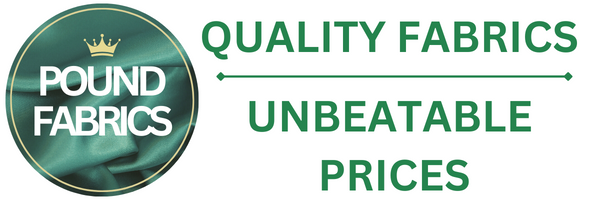Facing - not to be confused with interfacing - is a technique used to finish the edges and seams of your garment professionally, creating a semi-lined garment with neat seams. It involves concealing the raw edges of fabric with strip of fabric, a similar shape to your pattern piece, that lies inside the garment. Facings may be interfaced to help maintain the shape of the garment, and add shape to the concealed seam edge - which is why they are often confused with each other!
Common areas which require facing on garments are;
-
Necklines - usually only when they do not have a collar.
-
Armholes -on sleeveless garments.
-
Waistlines -where there is not a waist band present.
- Peek-a-boo openings -to reinforce the edges and maintain shapes.
Different Types of Facing
Some patterns call for different types, or amounts of facing that are required to conceal inner working seams;
-
Separate Facing -In most cases, facing pieces are assembled separately and then sewn together with the main garment, concealing the raw edge upon being attached.
-
Turned Edge Facing -This is popular within shop-bought garments. The facing will be a continuation of the main pattern outer piece, and will turn in on itself to conceal inner construction.
- Bias Tape Edging -Many modern patterns will use bias tape edging inside the garment as a way of partially or fully replacing facings. This alters how the garment will lie on the body, and means a line of stitching is visible from the outside of the garment, as the tape needs to be stitched down to keep it in place. This finish is only used for certain garments, where finished outer appearance will not be heavily affected by this.
Sewing Your Facing
This guide explains how to attach a facing to a neckline, but a similar technique is used for armholes, waistlines and other openings which require a facing. Be sure to remember to preserve your pattern pieces and keep them together once cut - facing panels are often small and easily lost!
You Will Need:
- Your garment, sewing pattern and fabric
- Sewing machine
- Thread
- Interfacing (dependent on your pattern instructions)
- Seam guide/tailors chalk (optional)
- Embroidery scissors
- Pins
Preparation
By the time you are ready to attach your facing, your garment will almost be complete. As the facing is being attached to a neckline, the shoulder seams should be sewn up, but the neckline will appear raw and unfinished. To prepare the neckline for facing, you will initially need to stabilise it. Most patterns will recommend stay-stitching, but if not, interfacing may be used. Your pattern will indicate accurately how to use interfacing, or check out our guide here for extra help. This guide focuses on the stay-stitching method.
To stay-stitch, set your machine’s stitch length to approximately 1.5mm, and sew close to the stitching line around your garments neckline. This creates a line of stitching which helps the neck hole keep its shape, and prevents it from warping or pulling when the facing is applied. Finally, you can prepare to stitch by pinning your facing to the neckline, lining up the shoulder seams of the facing and the garment.
Attaching the Facing
Before you begin to sew, ensure that your stitch length is set again to a standard 2.5-3mm length. Sew the facing to the neckline, in accordance to the seam allowance set out by your pattern. If you are concerned about keeping to the seam allowance when sewing around the curve of your neckline, you can use tailors chalk or a seam guide to make sure you stick to a consistent seam allowance.
To eliminate bulk when the facing is turned inside the garment, you now want to clip and trim the seam allowance. Clip the curved areas and trim the seam allowance to around half of its current width. To ensure a tidy rollover on the edge of the facing at the seam, make sure that the seam allowance bulk is trimmed slightly shorter on the side of the facing. Finish the raw edge of the facing to prevent fraying. This is best done using an overlocker or a zig-zag stitch. You may also finish the edge using a hemming technique, but bear in mind that as this will be bulky, it will show through.
Finally, you will want to secure the facing within the garment. Most patterns will require you to tack or slip stitch the facing to inner areas of the garment to hold it inside. The stitching should not go through the main body of the fabric, but instead attach to other construction areas like seams and seam allowances, ensuring the stitches are not visible on the outside of the garment.
Facing may seem like a slightly long-winded task, especially for finishing the inside of a garment which won't often get seen, it gives your projects an incomparable finish! Facing ensures a professional look and fit.
To see our full range of fabrics, click here.

















Leave a comment (all fields required)